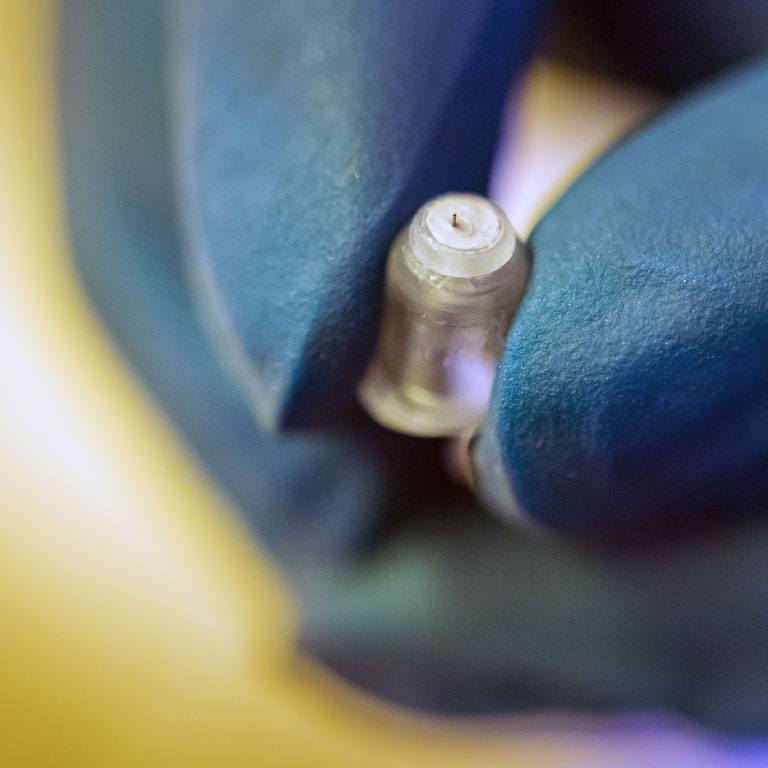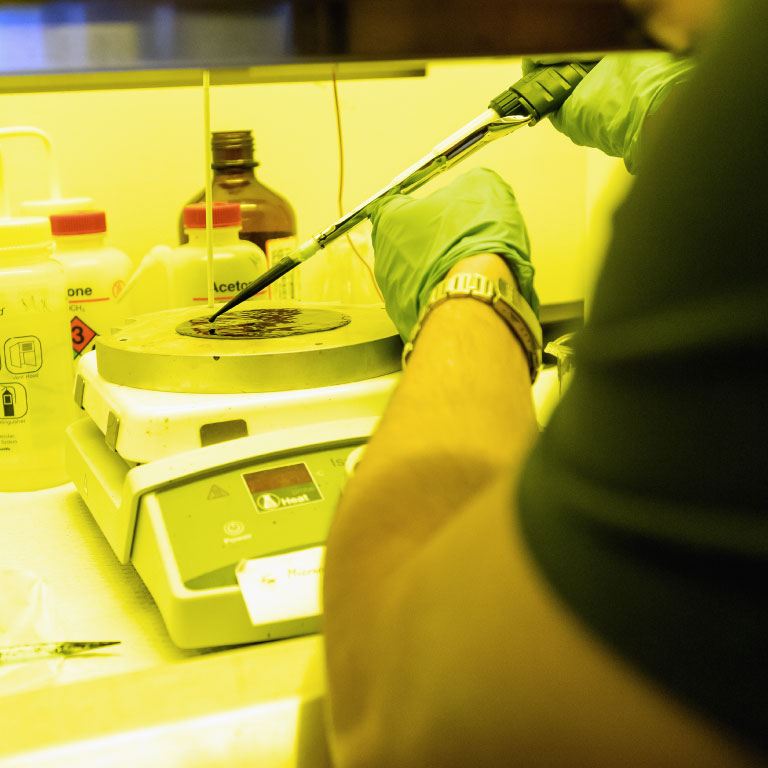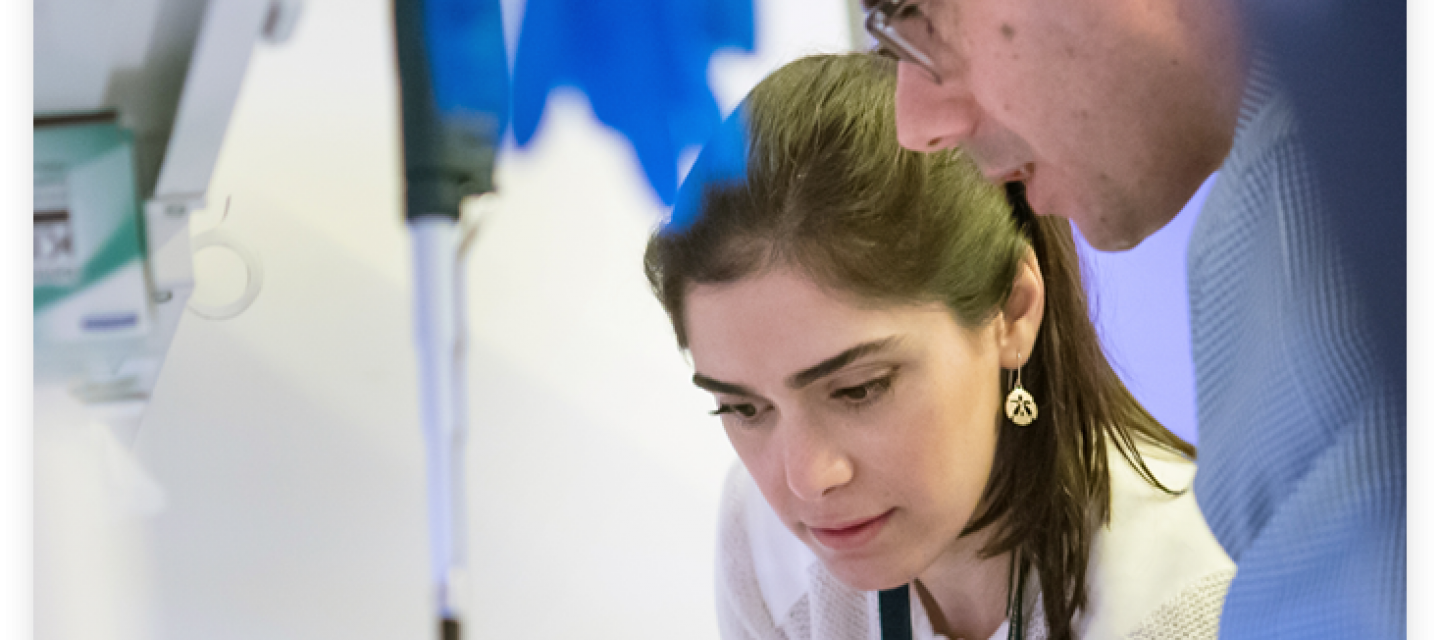The moment of anxiety is undeniable as you pull up your sleeve and hear the constricting tourniquet go snap! You can’t help but look as the hypodermic needle approaches. While modern medical needles may be wonders of minimalist function, their shape entering the skin’s surface like a good-willed mosquito is, for many, a terrifying sight.
Dizziness, fainting, panic, in extreme cases some people even go into convulsions from vasovagal reflex reactions caused by trypanophobia or ‘fear of needles’. It can lead to avoidance of crucial vaccinations, self-administered insulin injections and the like. Add the risk of post-application infections and the consequences are dangerous or even fatal.
But as entrepreneurial, empathic UBC Professor Boris Stoeber notes, it can be just as tough for the person on the other end of that syringe. Administering medicos (especially trainees) not only worry about jittery, jumpy or combative needle-phobic patients, there’s the real fear of ‘needle stick’ — themselves getting accidentally jabbed by that same needle.
What if you could eliminate the pain and fear of needles once and for all? It would appear that a UBC startup may have done exactly that. As co-founder, chief technology officer and a driving force behind Vancouver-based medical-device start up Microdermics Inc., Stoeber and his colleagues have devised and patented near-invisible micro-scale injection needles designed to be superior to the feared traditional hypodermics.
The Microneedle Injection Platform (MNIP), when combined with the reformulation of existing generic drugs, creates very positive “disruptive effects on the healthcare system” while avoiding disruptive effects on patients. Stoeber explains: “We came up with a fairly inexpensive process to repeatedly reproduce an array of metal needles and we patented this process because it is powerful compared to other approaches that have been developed before. That‘s what our company is based on — this process for fabricating these needles.” The technology and company was birthed and nurtured at UBC, designed to target the multi-billion-dollar global bio-pharmaceutics market.
{"preview_thumbnail":"/sites/default/files/styles/video_embed_wysiwyg_preview/public/video_thumbnails/p5cKIoqtnC0.jpg?itok=xfR-hV0R","video_url":"https://www.youtube.com/watch?v=p5cKIoqtnC0","settings":{"responsive":1,"width":"854","height":"480","autoplay":0},"settings_summary":["Embedded Video (Responsive)."]}
GETTING CLOSE AND PERSONALIZED
Standard hypodermic needles have been around for 160 plus years. Microneedles meant for transdermal drug delivery first appeared in the 1990s. Even now, most are still made from brittle silicon, glass or solid, dissolvable mini-spikes impregnated with a limited range of vaccines or other biologics.
Microdermics Inc. ‘needle-like structures’ also sub-millimetre in length but with real differences: the hollow metal tubes are just long enough to “disrupt” or puncture the skin’s tough, dead outermost layer, the stratum corneum, and efficiently deliver the goods without activating the nerve/pain receptors and blood vessels just underneath. The microneedles can also handle the liquid form of any existing drug. Also, because each needle can be fed independently, an array of different medications can be administered at the same time.
To needle-fearing patients, the pad-like Microneedle Injection Platform (MNIP) looks benign and the injection/application feels painless. Additionally, for low-resource hospitals and countries, tiny needles offer especially huge cost benefits. Microdermics co-founder and UBC Professor Boris Stoeber calls it ‘dose sparing’; rather than inject full syringes of expensive or scarce vaccines into subcutaneous fatty tissue or muscle (while trying not to puncture an artery or vein) where it inefficiently diffuses into the body, microneedles are a far more frugal and efficient delivery system. When delivered via the skin, where most of our immune cells are located, the vaccine that would otherwise would be hogged by one standard hypodermic injection can now be spread out to treat five people.
The uptake of many drugs can be measured in the patient’s blood and also in the ‘interstitial fluid’ that surrounds active skin and sub-dermal cells. Many of these drugs, such as antibiotics, must be administered in repeated patient-specific doses, carefully monitored, analyzed and adjusted via what Stoeber calls repeated “blood draws” done via hypodermic syringe.
Rather than subject the patient to repeated hypo-trauma and anxiety, microneedles take far smaller, far-less invasive samples of easily accessible interstitial fluid; less than one nano-litre (one-billionth of a litre) per draw is enough to do what Stoeber calls a “significant test of the concentration” of the target drug: “This makes it very convenient to just take that [for analysis] instead of a blood draw. No pain and less invasive.”


The revolutionary MNIP technology had its early origins in Stoeber’s work as a PhD student in Berkeley, California in 1999 where he developed a silicon-needle design. In 2006 he came north to work with UBC Pharmaceutical Sciences’ Professor Urs Häfeli to develop a better alternative. In 2007 Iman Mansoor joined Stoeber as a UBC MASc student; he’s now a company co-founder and VP of engineering and innovation. In 2012 Sahan Ranamukharachchi was a PhD student co-advised by Häfeli and Stoeber; he too is now a co-founder, COO and VP of research and development. About a year ago Grant Campany, former FDA ‘entrepreneur in residence’ and now Microdermics CEO, brought more than two decades of innovative, startup fund-raising skills to the mix.
In June 2013, the group filed a provisional patent application for its hollow micro-needle fabrication technology, launched Microdermics Inc. and in November 2014, graduated from the Lean Launch Pad program at UBC. In 2016, the fledgling company secured space at HATCH and what is UBC’s ‘on campus startup incubator’ and have ramped up quickly ever since.
Mansoor says HATCH is much more than an office space. “It allowed us to network with several potential investors and business experts and learn from the experiences of other members” and fellow HATCH entrepreneurs. Campany adds that “to have access to world-class facilities, enables us to perform our research and clinical development activities as though we were a much larger company.” Dr. Mehrsa Raeszadeh, director of manufacturing, adds that their UBC location is ideal at this stage in their growth because in part, they have access to an in-house entrepreneur at HATCH who acts as a sounding board and helps the team with developing “big picture ideas”.
In October, 2016 Microdermics took the $110,000 first prize at the prestigious BCIC-New Ventures Competition. “We got a lot of interest after we won the prize,” says Stoeber. The next exciting phase for the company, includes starting clinical trials on actual patients. Campany says the trials will “validate both use factors (e.g., benefit to patients with needle phobia), health economics (e.g., improvement with therapeutic compliance) and biological benefits resulting from injection into the skin versus muscle, intramuscular injection, or fat, subcutaneous injection.”
Being a UBC professor, I enjoy the opportunity to interact with students beyond the classroom setting. In class they learn fundamentals and see sample applications, but it’s exciting to see how they apply concepts in new situations in an innovative way.
Professor Boris Stoeber, Founder, Microdermics Inc.
The company is currently closing its initial seed round with investors who, continues Campany, “consist of seed funds and angel investors” in the U.S.A. and Canada; several have “deep connections throughout the bio-pharmaceutical industry” and via such connections Microdermics will cultivate “partnering opportunities” to further design, build and test MNIP systems for specific vaccines and biologics.
But it’s the connections and collaborations within UBC classrooms that really figure large in their origin story.
Whether it’s in the university lecture hall or corporate research lab, Boris Stoeber believes that enthused students and inventive startup companies are a natural match: “I certainly see a lot of potential in UBC graduates as employees for innovative companies, and I would gladly hire talent from UBC at Microdermics, as we have already done.”
“Being a UBC professor, I enjoy the opportunity to interact with students beyond the classroom setting. In class they learn fundamentals and see sample applications, but it’s exciting to see how they apply concepts in new situations in an innovative way.”
The combined intellectual property that fuelled the innovation behind the MNIP technology has taken a multidisciplinary route through varying post-secondary degrees, classrooms and countries, but it requires a determined entrepreneurial spirit to take it to market. Luckily, for students who collaborate with Stoeber, there is a willingness to take technology off campus where it can have real impact. “I will definitely continue to work with students to support their innovative ideas and help them move their ideas closer to a real product,” confirms Stoeber with a quiet promise.
